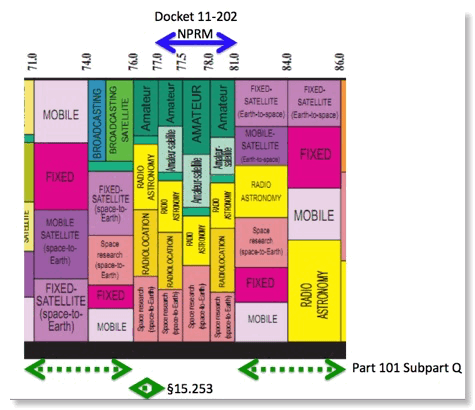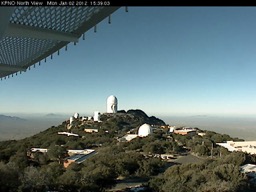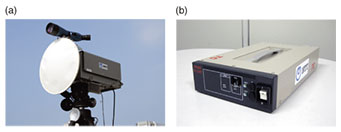FCC Proposes New 78 - 81 GHz Rules: "It was the best of times; It was the worst of times"

On December 20, 2011 the FCC released the NPRM in Docket 11-202 dealing with adopting rules to permit non-Federal Government use of the 78-81 GHz band for the first time. (My thanks to Mitch Lazarus at FHH CommLawBlog who made a post on this action before I noticed it.)
For reference, the amount of spectrum involved here is 3 GHz of bandwidth, or 6 times what is being sought for new mobile use in the national Broadband Plan. So if this band ends up only being used for the requested use and some passive scientific uses, that is a lot of spectrum “off the table”.
Normal (non experimental) commercial use of a band requires two basic FCC actions: An allocation which is consistent with the basic desired use (e.g. fixed or mobile) and service rules that describe the terms of use (e.g. bandwidth, power, modulation, etc.) and eligibility for a license or perhaps makes the band unlicensed. All spectrum up to 275 GHz has allocations of some kind. But the service rules at the upper end of the spectrum are spotty. As shown in the top chart, 71-76 and 81-86 GHz have service rules for “licensed light” fixed service use in Subpart Q of Part 101. 76-77 GHz is used for automotive radars authorized under §15.253. There is another Part 101 Subpart Q band at 92-95 GHz, but these are the only service rules above the 57-64 GHz unlicensed band of §15.253.
Real investors in the real world hesitate to invest in products that need non routine FCC approvals. Thus there is 120 GHz technology developed in Japan that was used in the Beijing Olympics and has no counterpart in the US, even though the US has been the leader in millimeter wave technologies:
Uncertainties in FCC spectrum policies discourage this type of R&D investment and affect US technological competitiveness.
This NPRM was stimulated by the development by Trex Enterprises Corporation of an “foreign object debris”/“FOD” detection system to meet an urgent FAA requirement for airports. The “foreign” in FOD does not mean non-US, but rather any debris on a runway that could cause damage to aircraft such as nuts and bolts and tools. The NPRM would permit use of the Trex system and similar systems.
The key issues in the NPRM are stated in para. 3 as:
“(W)e seek comment on a proposal by Trex to amend Part 90 of our rules to permit non-Federal radiolocation operations, including Trex’s FOD radar detection technology, in the 78-81 GHz band and to impose a specific assignment limitation to protect radio astronomy service operations in this band from harmful interference. We also seek comment on whether we should instead amend Part 15 to open the band to non-Federal radiolocation operations (including FOD detection devices) on an unlicensed basis. And we seek comment on whether we should amend Part 90 to permit use of the 78-81 GHz band by FOD detection devices at airports on a licensed basis, while permitting other uses on an unlicensed basis pursuant to Part 15 of our Rules.”
Kitt Peak National Observatory AZ

The radio astronomy community and the passive sensing community that both have allocations in and near their bands did a major study of their spectrum management issues in 2010 that are published in a report front eh national Research Council entitled Spectrum Management for Science in the 21st Century. Pages 186-187 of this report explore the feasibility of “cooperative spectrum sharing” as a way to share spectrum between active users and the scientific passive users in a “win/win” way.
The glib talk in the NPRM of possibly using this 3 GHz wide band only for ground focused FOD detectors at a few hundred airports and ruling out any other transmitters in this band to protect a handful of radio astronomy locations indicates perhaps a perfection of classic spectrum management philosophy, but is out of touch with modern thinking in spectrum management where one tries to use dynamic spectrum access techniques to get the most out of every Hz for both its contribution to GDP and for it scientific potential. Classic spectrum management was a “zero sum game” for participants. At these upper frequencies in virgin bands, we can do much better.
Your blogger would like to work with interested parties to prepare comments in the next month that use this band for multiple uses and encourage the capital formation needed for technical innovation. If interested, contact me here.




![Validate my RSS feed [Valid RSS]](valid-rss-rogers.png)

